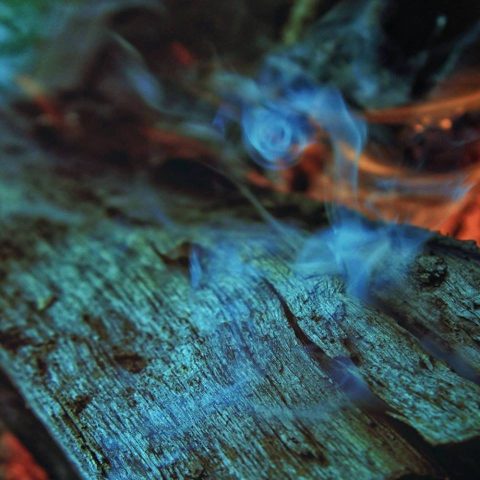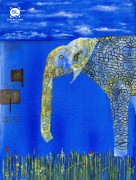How did this flash story come about? And what was your process for guiding it to completion?
“Viewfinder” possesses a terribly mundane origin story: It began as a writing exercise for an MFA fiction workshop. My colleagues and I were asked to write a scene that depicted one of our own characters interacting with a character created by someone else in the class. This became the first draft of “Viewfinder,” which I initially titled “Photograph of an Assassination.” It turned out that my effort didn’t capture the spirit of the assignment—the characters don’t actually interact—but I was pleased enough with the result to keep working at it.
The more interesting aspect of my work on “Viewfinder” is how the “borrowed” character—the photojournalist—developed. My colleague’s photojournalist was the focus of a larger project grounded in the research she’d done on a real-life individual. What drew me to her excellent depiction of the character was not his biography, but the potential impact of his work at the individual level. My colleague and I had a series of discussions, and we realized that my photojournalist had become someone altogether different. This small epiphany freed me to rethink some assumptions I’d made and the final draft came together. I learned that sometimes, what sparks a piece is far less important than what gets lit.
I don’t often hear writers speak warmly about writing prompts or exercises, but I’m definitely a believer in trying a novel approach to generating material every so often.
Your narrator and the eminent photojournalist are observers, perhaps to a fault. We writers are observers, too. What do you see as the benefits and risks to your characters and/or you in being an observer?
The observer is a bystander, one who, for any number of reasons, cannot intervene or refuses to do so. It is a safe role, in a sense—one that everyone has played at some point—but this safety comes with a heavy cost. Lately, the consequences of staying silent or turning a blind eye to injustice have personally become more concrete and urgent. What is my degree of culpability regarding, for example climate change? How am I to confront the routine injustices occurring in civil society every day that don’t affect me directly? I know I’m not the only one asking these questions of themselves in 2019, but what matters is where these questions lead us.
When I think about the writer as bystander, I accept that a certain degree of distance may be required to depict reality with meaningful texture. Part of the work of being a writer in such a position, however, is understanding the ramifications of being on the outside looking in. It may mean recognizing that sometimes, it is privilege that allows us to possess such a vantage point in the first place.
Are there common themes running through most of your writing? And if so, what are they?
I’ve spent a great deal of time writing about trauma, specifically how the relationship to traumatic events changes over time. Nothing, really, can be forgotten or undone, but we do tend to change our perspective on things, for better or worse. I have a suspicion that a great portion of life is spent negotiating this tendency towards reframing, both internally and externally.
My work is also shaped by my identities. I’m a gay, white, cis male, and this is a complicated intersection for me to navigate sometimes. I love writing stories that celebrate the majesty and mystery of queerness, and I’m also interested in portraying characters who are more than the sum of their parts. “Viewfinder,” for example, is light on concrete details about the narrator, but I think the reader knows everything they need to know.
When and how did you learn that language has power?
The act of setting thoughts down on paper has always grounded me in moments of freefall, but I started writing in earnest after I was assaulted in a random act of violence, about five years ago. My relationship to that event continues to change, and I’ll likely never know the full measure of how I was changed by it. I also don’t think I would be writing with this degree of urgency otherwise.
I’m a writer who learned to love literature through the work of writers like Willa Cather, Hermann Hesse, Saul Bellow, and Kurt Vonnegut, but when I think of the power of language, I immediately consider the present. There is a staggering amount of great literature being produced right now! Writers like Christine Schutt, Hanif Abdurraqib, Elif Batuman, Garth Greenwell, Joy Williams, Marlon James—they not only remind me of the power of language, they demonstrate that this power may actually be infinite.
What one thing that is important to you would you give up to become a better writer?
I’ve never thought about this before, but I wonder if I would be willing to give up music to become a better writer. I’m a classical musician, and I still teach lessons or play piano almost every day. But when I think about it, my voice is what I believe I have to offer the world, however small that contribution may be. If I knew that giving up the piano would make me a better writer—a writer who could truly change the world for the better—I would probably do it.
What’s the last book you gave to someone? Why?
A few weeks ago, I gave a student my copy of Diane Williams’ Vicky Swanky Is a Beauty. In truth, I only parted with it because I had just bought a copy of her Collected Stories, which contains Vicky Swanky in its entirety. I passed it along because Diane Williams is one of the handful of writers whose work always brings me joy, and so I feel a duty to share her work whenever I can. Diane Williams’ stories requires effort, and the result of that effort is a boundless sense of wonder. Her writing causes me to reevaluate my own work, challenging my assumptions about literature at the molecular level. What a precious gift.



 The core workshop of SmokeLong Fitness is all in writing, so you can take part from anywhere at anytime. We are excited about creating a supportive, consistent and structured environment for flash writers to work on their craft in a community. We are thrilled and proud to say that our workshop participants have won, placed, or been listed in every major flash competition. Community works.
The core workshop of SmokeLong Fitness is all in writing, so you can take part from anywhere at anytime. We are excited about creating a supportive, consistent and structured environment for flash writers to work on their craft in a community. We are thrilled and proud to say that our workshop participants have won, placed, or been listed in every major flash competition. Community works.